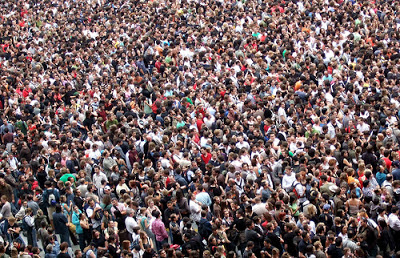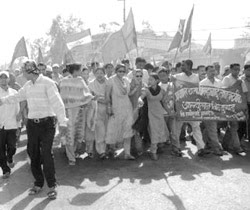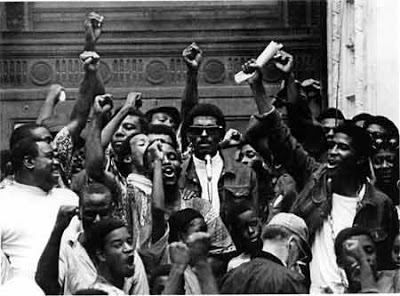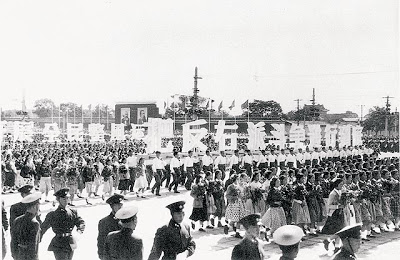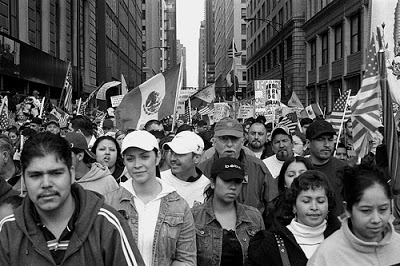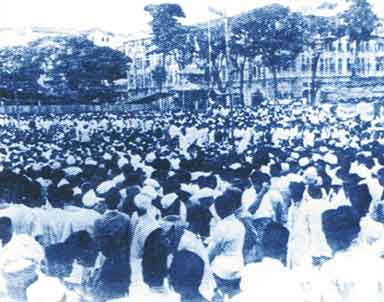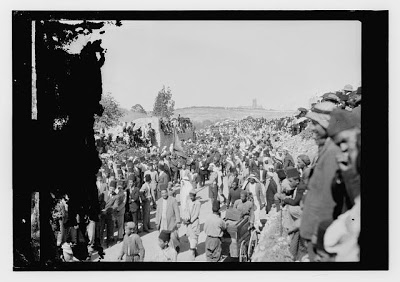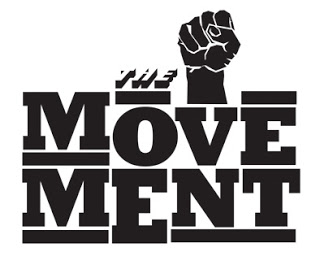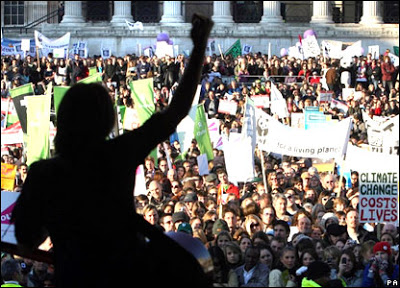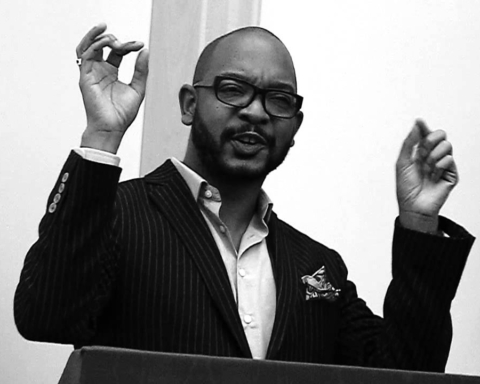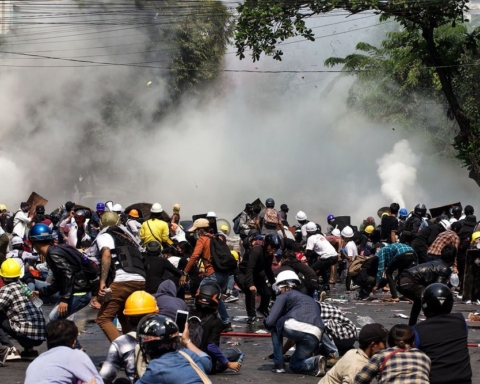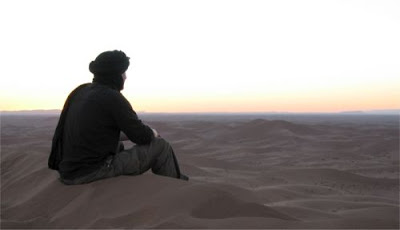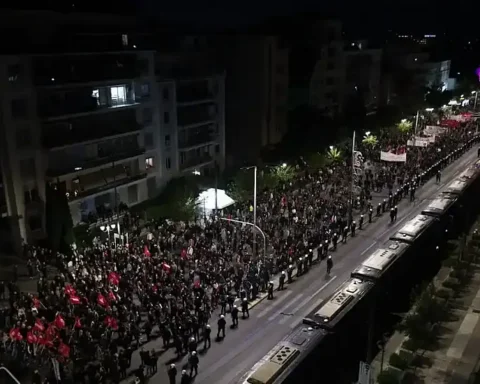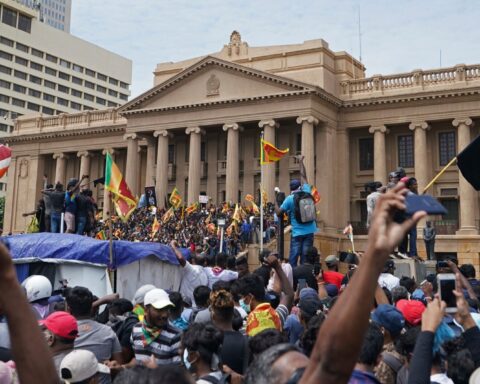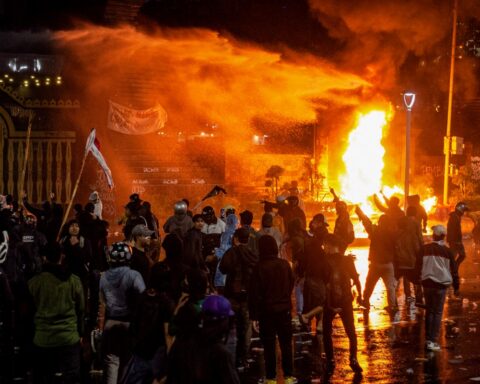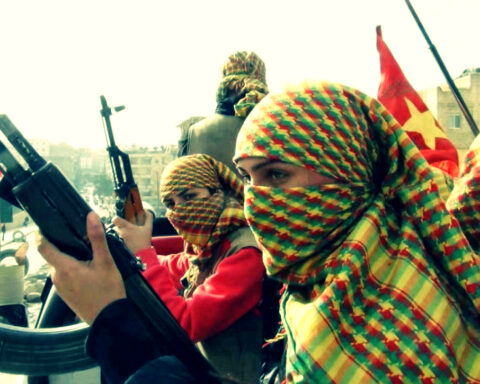My reflections come from a malaise and follow a series of questions that I asked myself whilst at a meeting in Venice some time ago with Toni, Casarini etc. A word kept coming up in this meeting : movement. This is a word with a long history in our tradition, and it seems the most recurrent one in Toni’s interventions. In his book too this word strategically crops up everytime the multitude needs a definition, for instance when the concept of multitude needs to be detached from the false alternative between sovereignty and anarchy. My malaise came from the fact that for the first time I realised that this word was never defined by those who used it. I could have not defined it myself. In the past I used as an implicit rule of my thinking practice : the formula ’when the movement is there pretend it is not there and when it’s not there pretend it is’. But I didn’t know what this word meant. It is a word everyone seems to understand but no one defines. For instance where does this word come from ? Why was a political decisive instance called movement ? My questions come from this realisation that it is not possible to leave this concept undefined, we must think about the movement because this concept is our unthought, and so long as it remains such it risks compromising our choices and strategies. This is not just a philological scruple due to the fact that terminology is the poetic, hence productive moment of thought, nor do I want to do this because it is my job to define concepts, as a habit. I really do think that the a-critical use of concepts can be responsible for many defeats. I propose to start a research that tries to define this word, so I will try to just begin this with some basic considerations, to orient future research.
First some banal historical data : the concept of movement, that in the sciences and philosophy has a long history, in politics only acquires a technically relevant meaning in the 19th century. One of its first appearances dates back to the French July Revolution of 1830, when the agents of change called themselves partie du mouvement and their adversaries partie du l’ordre. Only with Lorenz von Stein, an author who influenced both Marx and Schmitt, this concept becomes more precise and begins to define a strategic field of application. In his The History of Social Movement in France (1850) he plays the notion of movement in dialectical contrapposition to the notion of State. The state is the static and legal element whilst the movement is the expression of the dynamic forces of society. So the movement is always social and in antagonism with the state, and it expresses the dynamic primacy of society over juridical and state institutions. However, Von Stein does not define movement : he ascribes to it a dynamic and designates its function but he neither provides a definition nor a topos for it.
Some interesting historical indication in the history of movements can be found in Arendt’s book on totalitarianism. She does not define movement, but shows that around the first world war, immediately before and immediately after, movements in Europe undergo an exceptional development in a strategic contrapposition to partieswhen the latter enter a period of crisis. In this period there is an explosion of the concept and phenomenon of movement, a terminology that is used both by the right and the left : Fascism and Nazism always define themselves as movements first and only secondly as parties.
However, this term exceeds the political realm : when Freud wants to write a book in 1914 in order to describe what he is part of, he calls it a psychoanalytical movement. There is still no definition here, but evidently in certain historical moments, certain codewords irresistibly impose themselves and become adopted by antagonistic positions, without needing to be defined. The embarassing point of my research, where blindess to the concept becomes visible, is when I realised that the only person who tried to define this term was a Nazi jurist : Carl Schmitt.
In 1933, an essay entitled State, Movement, People and subtitled The Tripartition of Political Unity, he tries to define the political constitutional function of the notion of movement. This is embarassing because in this essay Schmitt tries to define the constitutional structure of the Nazist Reich. I will summarise his thesis, given that this promiscuity with a thinker of Nazism demands clarity. According to Schmitt, the political unity of the Nazi Reich is founded on three elements or members : state, movement and people. The constitutional articulation of the Reich results from the articulation and distinction of these three elements. The firts element is the state which is the static political side : the apparatus of the offices. The people is on the other hand, mind you, the unpolitical element that grows in the shadow and under the protection of the movement. The movement is the real political element, the dynamic political elelement that finds its specific form in the relation with the National Socialism Party and its direction, but for Schmitt the Fuhrer is only a personification of the movement. Schmitt suggests this tripartition is also present in the constitutional apparatus of the Soviet state.
My first consideration is that the primacy of the notion of movement lies in the function of the becoming unpolitical of the people (remember that the people is the unpolitical element that grows in the shadow and under the protection of the movement). So the movement becomes the decisive political concept when the democratic concept of the people, as a political body, is in demise. Democracy ends when movements emerge. Substantially there are no democratic movements (if by democracy we mean what traditionally regards the people as the political body constitutive of democracy). On this premises, revolutionary traditions on the Left agree with Nazism and Fascism. It is not by chance that contemporary thinkers who try to think of new political bodies, such as Toni, take a distance from the people. For me it is significant that around Jesus there are never laos or demos (technical terms for people) but only oclos (a mass, a turba, multitude). The concept of movement presupposes the eclypse of the notion of people as constitutive political body.
The second implicaiton of this Schmittian concept of movement, is that the people is an unpolitical element whose growth the movement must protect and sustain [Schmitt uses the term wachsen, biological growth]. To this unpolitical people corresponds the unpolitical sphere of the administration, and he also evokes the corporatist state of Fascism. Looking at it today we can’t help seeing – in this determination of the people as unpolitical – the implicit recognition, which Schmitt never dares to articulate, of its biopolitical character. The people is now turned from constitutive political body into population : a demographical biological entity, and as such unpolitical. An entity to protect, to nurture. When during the 19th century the people ceased to be a political entity and turned into demographical and biological populations, the movement became a necessity. This is something we must be aware of : we live in an era when the transformation of people into population is an accomplished fact. The people is a biopolitical entity in Foucault’s sense and makes the concept of movemnt necessary. If we want to think the notion of biopolitics differently, as Toni does, if we think about the intrinsic politicisation of the biopolitical, which is already thoroughly political and needs not be politicised through the movement, then we have to rethink the notion of the movement too.
This labour of definition is necessary because if we carry on reading Schmitt we see threatening aporias : in so far as the determining political element, the autonomous element, is the movement, and the people is unpolitical, then the movement can only find its own being political by assigning to the unpolitical body of the people internal caesura that allow for its politicisation.This caesura in Schmitt is what he calls the identity of spieces, i.e. racism. Here Schmitt reaches the highest identification with racism and the greatest corresponsibility with Nazism. This is a fact but we must recognise that this choice, of being forced to identify a caesura in the unpolitical body of the people, is an immediate consequence of his notion of the function of the movement. If the movement is the political element as the autonomous entity, where can it draw its politics from ? Its politics can only be founded on its capacity to identify an enemy within the people, in Schmitt’s case a racially extraneous element. Where there is movement there is always a caesura that cuts through and divides the people, in this case, identifying an enemy. This is why I think we must rethink the notion of movement, and its relation with the people and multitude. In Schmitt we see that the excluded elements from the movement comes back as what must be decided upon, the political must decide upon the unpolitical. The movement politically decides on the unpolitical. It can be racial but it can also be a management of government of populations, as in today.
These are my questions :
Do we have to keep using the concept of movement ? If it signals a threshold of politicisation of the unpolitical, can there be a movement that is different from civil war ? or
In what direction can we rethink the concept of movement and its relation to biopolitics ?
Here I won’t give you any answers, it is a long term research project, but I have some indications :
The concept of movement is central to Aristotle, as kinesis, in the relaiton between potenza and act. Aristotle defines movement as the act of a potenza as potenza, rather than the passage to act. Secondly he says that movement is ateles, imperfect act, without an end. Here I would suggest a modification to his view, and maybe Toni might agree with me for once on this : that movement is the constitution of a potenza as potenza. But if this is true then we cannot think of movement as external or autonomous in relation to the multitude. It can never be subject of a decision, organisation, direction of the poeple, or element of politicisation of the multitude or the people.
Another interesting aspect in Aristotle is that movement is an unfinished act, without telos, which means that movement keeps an essential relation with a privation, an absence of telos. The movemetn is always constitutively the relation with its lack, its absence of end, or ergon, or telos and opera. What I always disagree with Toni about is this emphasis placed on productivity. Here we must reclaim the absence of opera as central. This expresses the impossibility of a telos and ergon for politics. Movement is the indefiniteness and imperfection of every politics. It always leaves a residue.
In this perspective the motto I cited as a rule for myself might be reformulated ontologically as this : the movement is that which if it is, is as if it wasn’t, it lacks itself (manca a se stesso), and if it isn’t, is as if it was, it exceeds itself. It is the threshold of indeterminacy between an excess and a deficiency which marks the limit of every politics in its constitutive imperfection.
08 March 2005
Transcribed and translated by Arianna Bove from audio files available here :
